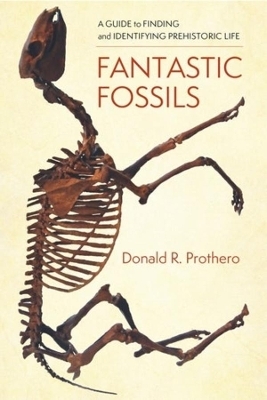
Fantastic Fossils
Columbia University Press (Verlag)
978-0-231-19579-9 (ISBN)
In Fantastic Fossils, Donald R. Prothero offers an accessible, entertaining, and richly illustrated guide to the paleontologist’s journey. He details the best places to look for fossils, the art of how to find them, and how to classify the major types. Prothero provides expert wisdom about typical fossils that an average person can hope to collect and how to hunt fossils responsibly and ethically. He also explores the lessons that both common and rarer discoveries offer about paleontology and its history, as well as what fossils can tell us about past climates and present climate change. Captivating illustrations by the paleoartist Mary Persis Williams bring to life hundreds of important specimens. Offering valuable lessons for armchair enthusiasts and paleontology students alike, Fantastic Fossils is an essential companion for all readers who have ever dreamed of going in search of traces of a lost world.
Donald R. Prothero is a paleontology and geology researcher, teacher, and author. He is adjunct professor of geological sciences at California State Polytechnic University, Pomona, and research associate in vertebrate paleontology at the Natural History Museum of Los Angeles County. His most recent book is The Story of the Dinosaurs in 25 Discoveries: Amazing Fossils and the People Who Found Them (Columbia, 2019).
Preface
Acknowledgments
Part I. Fossils Are Where You Find Them
1. Fantastic Fossils
2. How Are Fossils Formed?
3. What Kinds of Rocks Yield Fossils?
4. Where Do You Find Fossils?
5. Dating Fossils
6. Collecting Fossils: Badlands
7. Collecting Fossils: Beaches
8. Collecting Fossils: Quarries and Roadcuts
9. The Crucial Step: Collecting Data
Part II. Identifying Your Fossils
10. What’s in a Name?
11. Phylum Porifera: Sponges and Their Relatives
12. Phylum Cnidaria (Coelenterates): Sea Jellies, Sea Anemones, and Corals
13. Phylum Brachiopoda: Brachiopods, or Lamp Shells
14. Phylum Bryozoa: Bryozoans, or Moss Animals
15. Phylum Arthropoda: Trilobites and Their Relatives
16. Phylum Mollusca: Clams, Snail, Squids, and Their Relatives
17. Phylum Echinodermata: Sea Stars, Sea Urchins, and Their Relatives
18. Phylum Hemichordata: Graptolites
19. Phylum Chordata: Fish, Amphibians, Reptiles, Birds, and Mammals
20. Paleobotany: Fossil Plants
Index
| Erscheinungsdatum | 05.01.2022 |
|---|---|
| Zusatzinfo | 364 illustrations, 8-page color insert |
| Verlagsort | New York |
| Sprache | englisch |
| Maße | 152 x 229 mm |
| Themenwelt | Sachbuch/Ratgeber ► Natur / Technik ► Natur / Ökologie |
| Sachbuch/Ratgeber ► Natur / Technik ► Naturwissenschaft | |
| Naturwissenschaften ► Geowissenschaften ► Mineralogie / Paläontologie | |
| ISBN-10 | 0-231-19579-6 / 0231195796 |
| ISBN-13 | 978-0-231-19579-9 / 9780231195799 |
| Zustand | Neuware |
| Haben Sie eine Frage zum Produkt? |
aus dem Bereich


